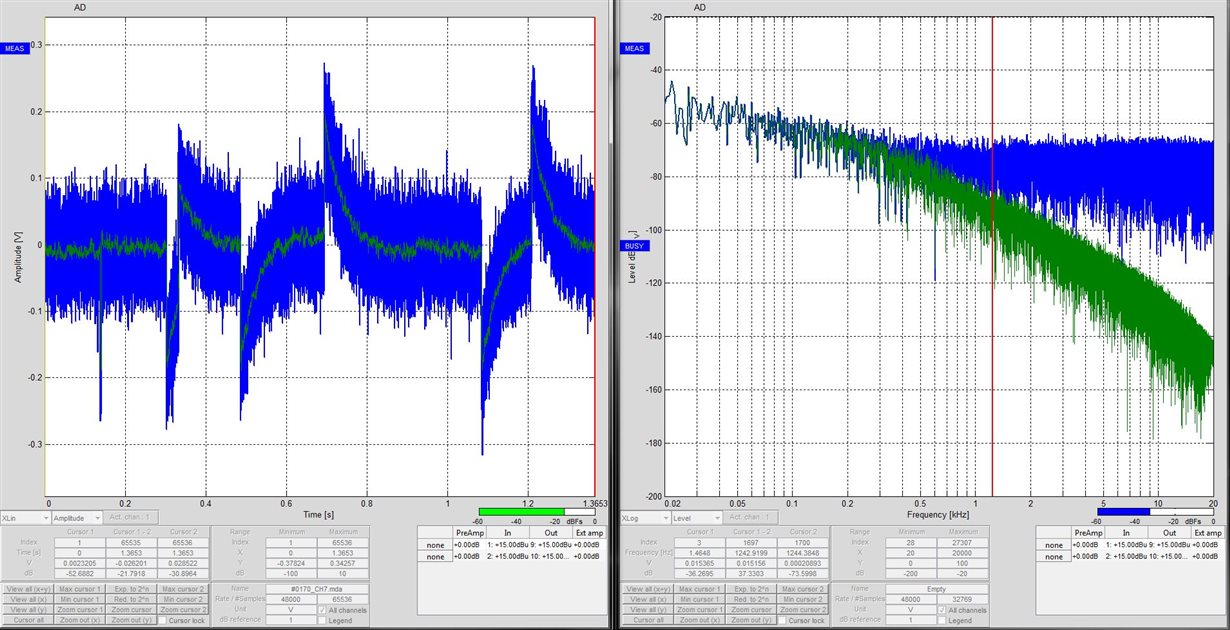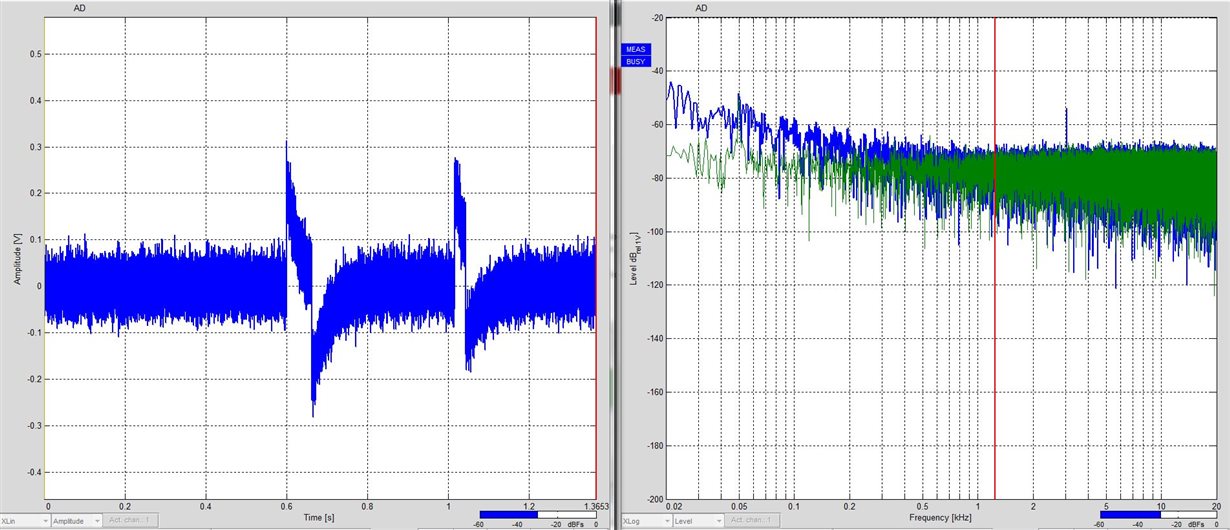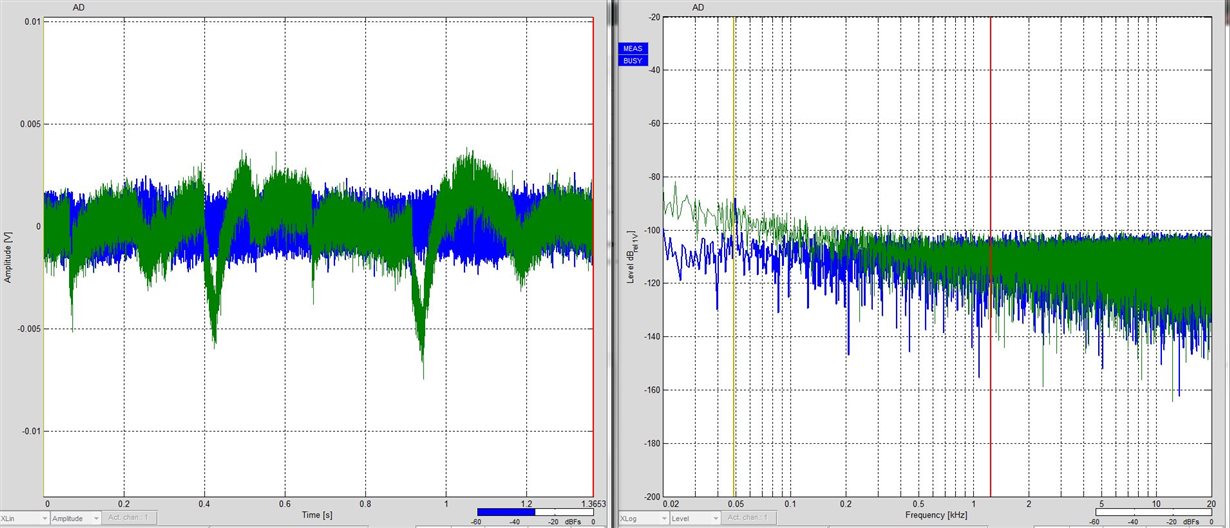Hello,
we have a 16 microphone input decive with the PGA2505 in the preamp section. We do also produce another analogue to digital unit which is also based on the PGA2505. We recently found that some devices fail our QC because of low frequency noise below 200Hz.
I began to investigate the noise issue and found that there are audible low frequency pop sound which look like short signal jumps in the time domain.
See attached picture for the measurement:
As you can see, blue channel is fine, green channel has pop-noise. We nearly tried everything to find the issue. I can exclude the following things:
- all input circuitry of the PGA. We removed input caps, resistors and the protection diodes. So the PGA inputs were left unconnected
- the PCB layout. The problem occurs in two different designs with different component layout. (But the same components used)
- we do not accidentially measure a defective output. The noise is visible in our level metering as well
- We do not think that the noise comes from a part behind the PGA. I wired the PGA output to an OPA1632 input of an intact channel with the result that the noise occured in the new channel.
The input schematic generally the same linke in the EVM document. At the output of the PGA we feed ab OPA1632.
Some strange effects we found:
- We took some tweezers and moved them about 0.5mm over the protection diodes. This increased the amount of pop sounds! It was even sensitive to temperature. In cold state there are less pops. But the strange thing is: After we removed the diodes the pops remained constant. They could not be influenced by even touching parts of the circuit.
- We removed the possibly defective PGA2505. I hard-wired SDO to SDI to beeing able to set gain in the following stages. The issue now switched over th the next channel including the diode-E-field issue.





